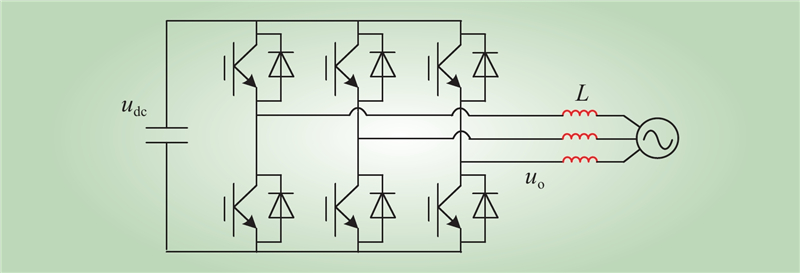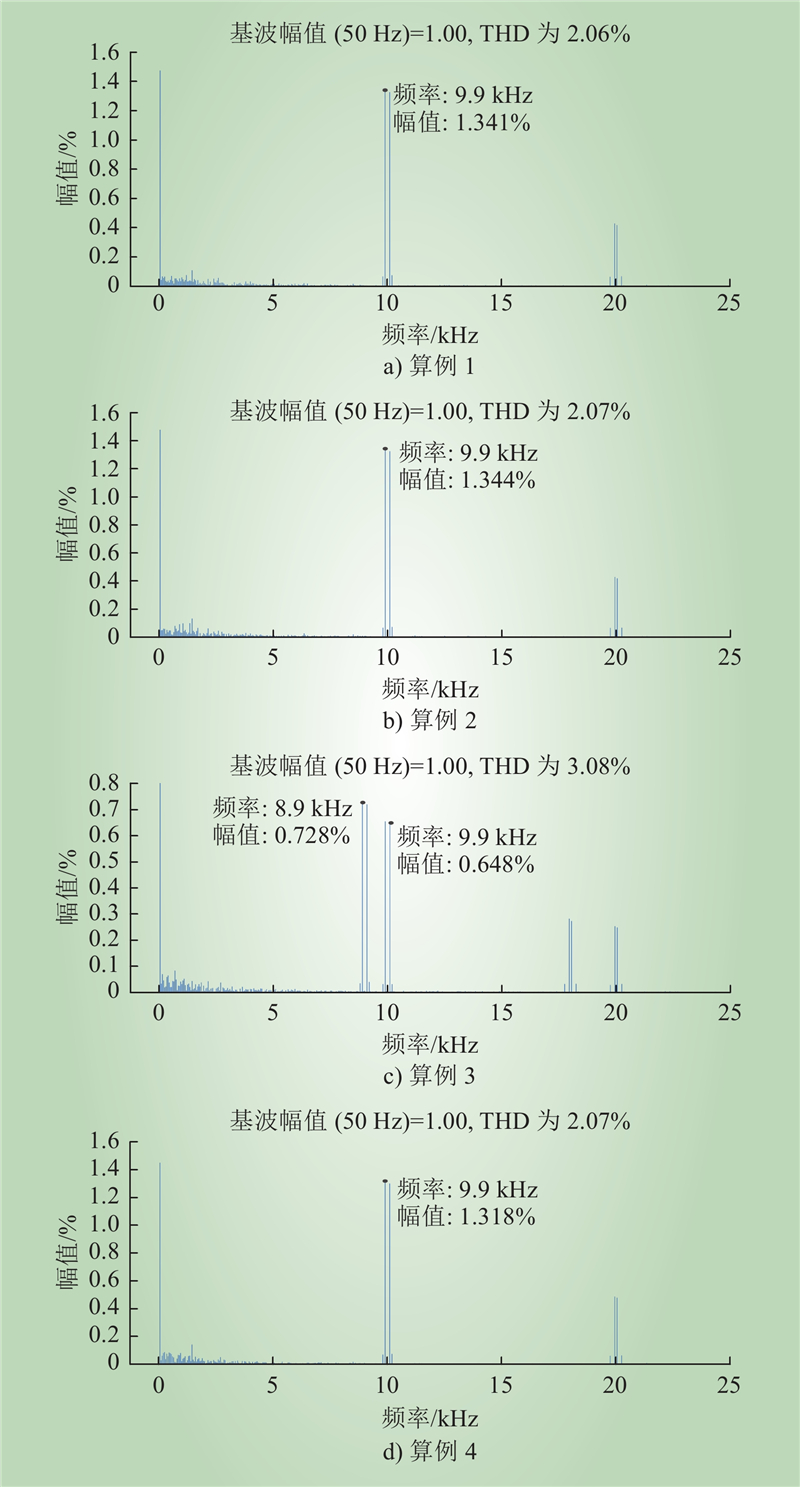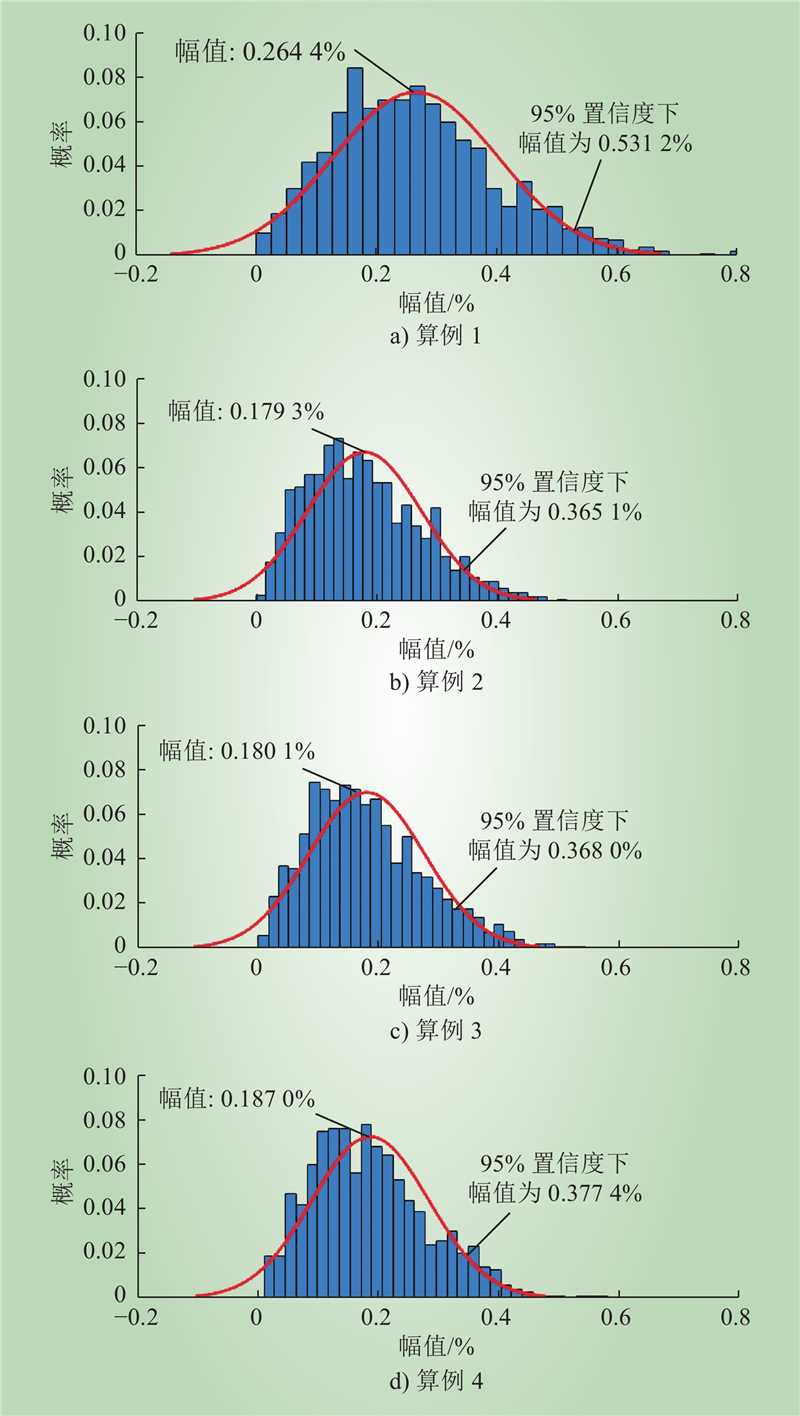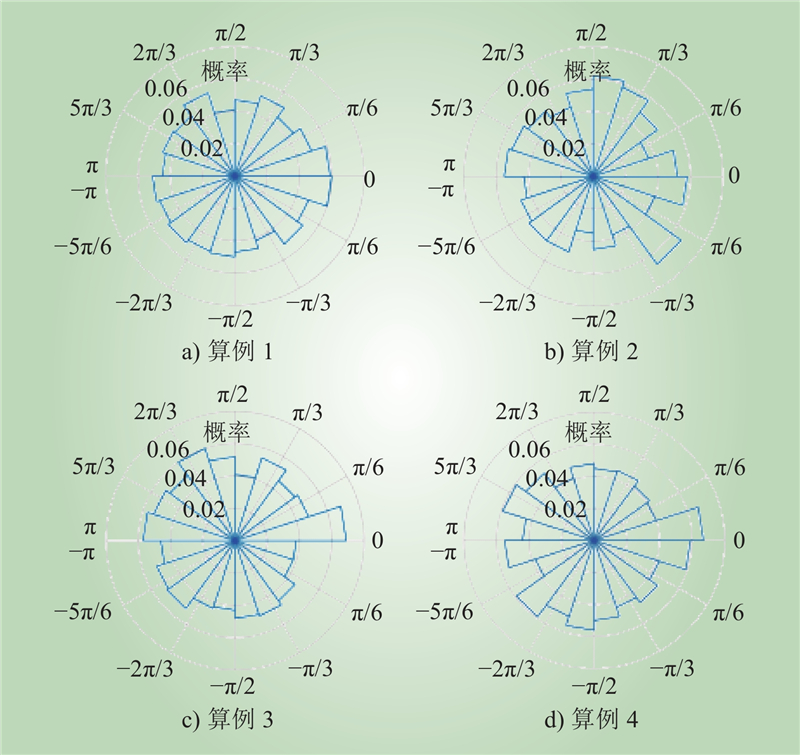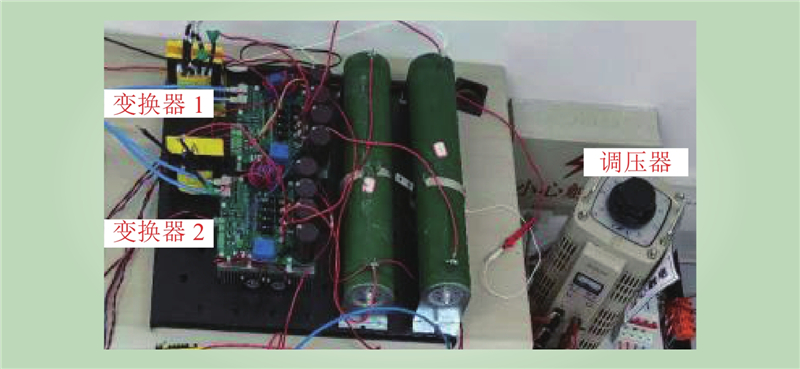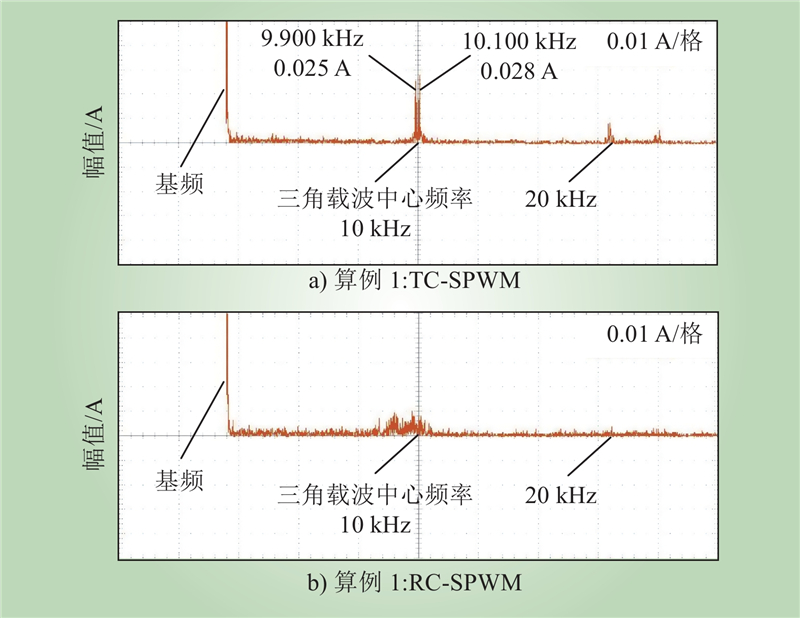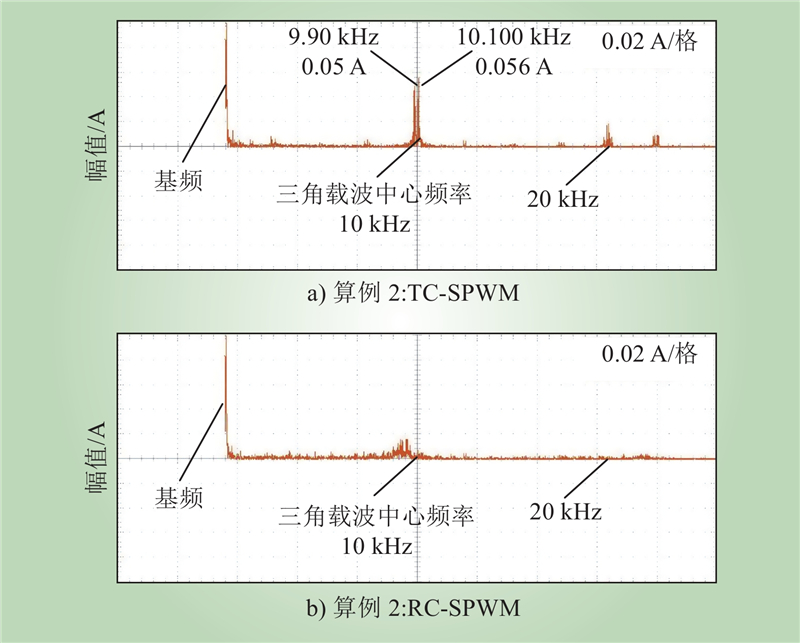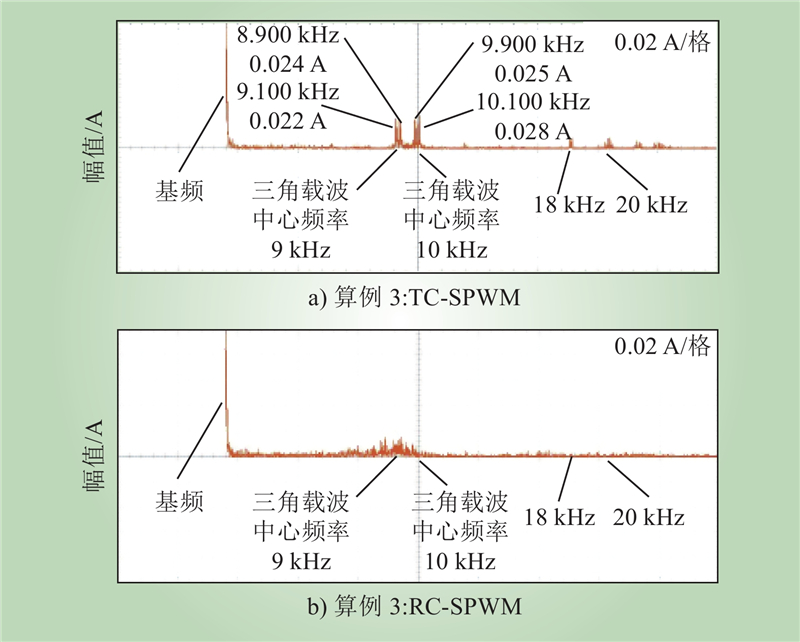| 1 |
唐松浩, 肖湘宁, 陶顺. 非故意发射超高次谐波发生机理及影响因素分析[J]. 电力电容器与无功补偿, 2021, 42 (2): 103- 109.
DOI
|
|
TANG Songhao, XIAO Xiangning, TAO Shun. Analysis of mechanism and influencing factors of non-intentional emission of ultra high harmonics[J]. Power Capacitor & Reactive Power Compensation, 2021, 42 (2): 103- 109.
DOI
|
| 2 |
李帅虎, 王婷婷, 刘制, 等. 适用于PET的负载电流前馈控制策略[J]. 中国电力, 2022, 55 (9): 88- 97.
|
|
LI Shuaihu, WANG Tingting, LIU Zhi, et al. Load current feedforward control strategy suitable for PET[J]. Electric Power, 2022, 55 (9): 88- 97.
|
| 3 |
汪颖, 罗代军, 肖先勇, 等. 超高次谐波问题及其研究现状与趋势[J]. 电网技术, 2018, 42 (2): 353- 365.
DOI
|
|
WANG Ying, LUO Daijun, XIAO Xianyong, et al. Review and development tendency of research on 2-150 kHz supraharmonics[J]. Power System Technology, 2018, 42 (2): 353- 365.
DOI
|
| 4 |
李天楚, 容斌, 伍智鹏, 等. 两级式单相变频器超高次谐波发射机理研究[J/OL]. (2023-04-17) [2023-10-08]. http://kns.cnki.net/kcms/detail/12.1420.TM.20230414.1925.006.html.
|
| 5 |
陶顺, 要海江, 宋一丹, 等. 三相Vienna型充电机超高次谐波产生机理分析[J]. 电力系统保护与控制, 2022, 50 (5): 22- 32.
|
|
TAO Shun, YAO Haijiang, SONG Yidan, et al. Analysis of the generation mechanism of supraharmonics in a three-phase Vienna charger[J]. Power System Protection and Control, 2022, 50 (5): 22- 32.
|
| 6 |
LETHA S S, ESPIN D A, RÖNNBERG SARAH K, et al. Evaluation of medium voltage network for propagation of supraharmonics resonance[J]. Energies, 2021, 14 (4): 1093.
DOI
|
| 7 |
SONG Y P, EBRAHIMZADEH E, BLAABJERG F. Analysis of high-frequency resonance in DFIG-based offshore wind farm via long transmission cable[J]. IEEE Transactions on Energy Conversion, 2018, 33 (3): 1036- 1046.
DOI
|
| 8 |
丁一博, 徐永海, 刘子腾, 等. 光伏发电超高次谐波发射特性及影响因素分析[J]. 电力电容器与无功补偿, 2021, 42 (2): 160- 167.
DOI
|
|
DING Yibo, XU Yonghai, LIU Ziteng, et al. Analysis of ultra-high harmonic emission characteristics and influence factor of photovoltaic power generation[J]. Power Capacitor & Reactive Power Compensation, 2021, 42 (2): 160- 167.
DOI
|
| 9 |
戴烨敏, 李育坤, 林顺富, 等. 多逆变器并网系统多谐波建模及谐波交互分析[J]. 电气传动, 2022, 52 (14): 25- 31.
DOI
|
|
DAI Yemin, LI Yukun, LIN Shunfu, et al. Multiple harmonic modeling and harmonic interaction analysis of multi-inverter grid-connected system[J]. Electric Drive, 2022, 52 (14): 25- 31.
DOI
|
| 10 |
钟庆, 冯俊杰, 王钢, 等. 含多电压源型换流器配电网高频谐振特性分析[J]. 电力系统自动化, 2017, 41 (5): 99- 105.
DOI
|
|
ZHONG Qing, FENG Junjie, WANG Gang, et al. Analysis on high frequency resonance characteristics of distribution network with multiple voltage source converters[J]. Automation of Electric Power Systems, 2017, 41 (5): 99- 105.
DOI
|
| 11 |
SHUAI Z K, LIU D G, SHEN J, et al. Series and parallel resonance problem of wideband frequency harmonic and its elimination strategy[J]. IEEE Transactions on Power Electronics, 2014, 29 (4): 1941- 1952.
DOI
|
| 12 |
张逸, 方键, 林芳, 等. 三相变压器超高次谐波传递特性[J]. 电网技术, 2020, 44 (11): 4387- 4394.
DOI
|
|
ZHANG Yi, FANG Jian, LIN Fang, et al. Supraharmonics transmission characteristics in three phase transformer[J]. Power System Technology, 2020, 44 (11): 4387- 4394.
DOI
|
| 13 |
ESPÍN-DELGADO Á, RÖNNBERG S. Modeling and analysis of supraharmonic propagation for stochastic studies[J]. IEEE Transactions on Power Delivery, 2022, 37 (6): 4899- 4910.
DOI
|
| 14 |
王子江, 李琼林, 蒋建东, 等. 基于部分采样及混合分段的超高次谐波检测方法[J]. 电网技术, 2021, 45 (1): 339- 346.
DOI
|
|
WANG Zijiang, LI Qionglin, JIANG Jiandong, et al. A measurement method of supraharmonics based on partial sampling and hybrid segmentation[J]. Power System Technology, 2021, 45 (1): 339- 346.
DOI
|
| 15 |
王莹鑫, 徐永海, 陶顺, 等. 超高次谐波的合并等间隔采样方法[J]. 电力系统自动化, 2020, 44 (16): 161- 170.
DOI
|
|
WANG Yingxin, XU Yonghai, TAO Shun, et al. Combined equidistant sampling method of supraharmonics[J]. Automation of Electric Power Systems, 2020, 44 (16): 161- 170.
DOI
|
| 16 |
ERHAN V, SLANGEN T M H, ĆUK V, et al. Measurement and analysis of the low voltage network impedance in the supraharmonic range[C]//2022 20th International Conference on Harmonics & Quality of Power (ICHQP). Naples, Italy. IEEE, 2022: 1–6.
|
| 17 |
MENDES T M, FERREIRA D D, SILVA L R M, et al. PLL based method for supraharmonics emission assessment[J]. IEEE Transactions on Power Delivery, 2022, 37 (4): 2610- 2620.
DOI
|
| 18 |
FRIGO G, BRAUN J. Supraharmonic dynamic phasors: estimation of time-varying emissions[J]. IEEE Transactions on Instrumentation and Measurement, 2022, 71, 1- 11.
|
| 19 |
李天楚, 容斌, 伍智鹏, 等. 基于边缘计算的风电群非故意发射超高次谐波抑制策略[J]. 中国电力, 2023, 56 (8): 200- 206, 215.
|
|
LI Tianchu, RONG Bin, WU Zhipeng, et al. Suppression strategy of unintentional emission supraharmonic based on edge computing for wind farms[J]. Electric Power, 2023, 56 (8): 200- 206, 215.
|
| 20 |
黄全振, 郭新军, 张洋, 等. 应用于级联多电平变流器的非均匀载波移相方法研究[J]. 中国测试, 2021, 47 (8): 89- 95.
DOI
|
|
HUANG Quanzhen, GUO Xinjun, ZHANG Yang, et al. Research of inhomogeneous carrier phase shifting method for cascaded multilevel converters[J]. China Measurement & Test, 2021, 47 (8): 89- 95.
DOI
|
| 21 |
刘辉, 高格, 傅鹏, 等. 基于载波移相大功率并联逆变器输出谐波分析[J]. 电力电子技术, 2012, 46 (2): 4- 6.
DOI
|
|
LIU Hui, GAO Ge, FU Peng, et al. The harmonic analysis of a large capacity parallel inverter with carrier phase-shifted PWM[J]. Power Electronics, 2012, 46 (2): 4- 6.
DOI
|
| 22 |
刘永迪, 李虹, 张波, 等. 基于双重傅里叶级数的混沌SPWM频谱量化分析[J]. 物理学报, 2014, 63 (7): 68- 77.
DOI
|
|
LIU Yongdi, LI Hong, ZHANG Bo, et al. Spectrum calculation of chaotic SPWM signals based on double Fourier series[J]. Acta Physica Sinica, 2014, 63 (7): 68- 77.
DOI
|
| 23 |
李尧, 刘剑. 基于双随机调制的特定频率谐波消除方法研究[J]. 兵器装备工程学报, 2022, 43 (11): 266- 272.
DOI
|
|
LI Yao, LIU Jian. Research on harmonic elimination method of specific frequency based on double random modulation[J]. Journal of Ordnance Equipment Engineering, 2022, 43 (11): 266- 272.
DOI
|
| 24 |
李冠林, 陈希有, 刘凤春. 混沌PWM逆变器输出电压功率谱密度分析[J]. 中国电机工程学报, 2006, 26 (20): 79- 83.
DOI
|
|
LI Guanlin, CHEN Xiyou, LIU Fengchun. Analysis of power spectral density of the output voltage in chaotic PWM inverter[J]. Proceedings of the CSEE, 2006, 26 (20): 79- 83.
DOI
|
| 25 |
孙正伟. 随机调制技术在高性能交流伺服系统中的应用研究[D]. 北京: 北京交通大学, 2019.
|
|
SUN Zhengwei. Research on application of random modulation technology in high performance AC servo system[D]. Beijing: Beijing Jiaotong University, 2019.
|



